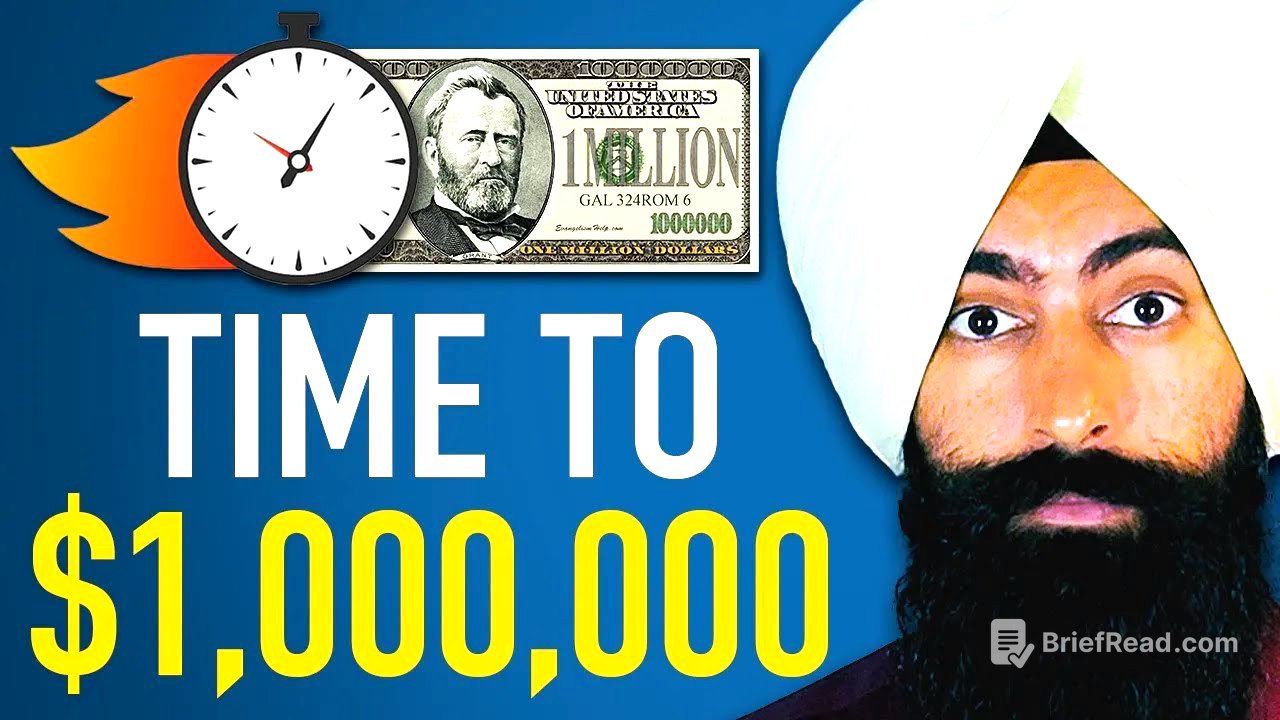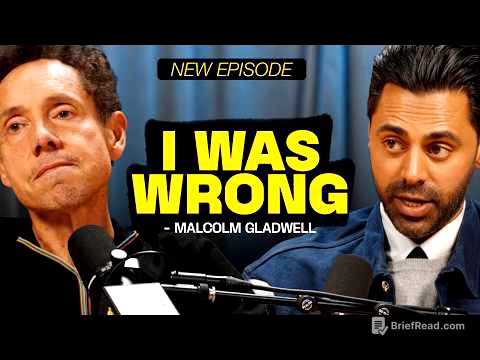TLDR;
The video explains how to accumulate a million dollars through saving and investing, highlighting the importance of starting early and increasing contributions over time. It contrasts the slow path of saving alone with the faster routes of investing in funds like the S&P 500 and incrementally increasing investment amounts. The video also addresses common concerns about market volatility and the feasibility of saving significant amounts, advocating for reducing major expenses like housing and cars, and avoiding unnecessary spending to free up capital for investment.
- Saving alone takes too long to reach a million dollars.
- Investing in funds with an average annual return significantly accelerates wealth accumulation.
- Incrementally increasing investment amounts each year further reduces the time to reach a million dollars.
- Reducing major expenses and avoiding unnecessary spending are crucial for freeing up capital to invest.
Working to Get Paid vs. Building Wealth [0:00]
The primary goal for most people is to earn money to cover their bills, regardless of their profession. However, building wealth requires more than just earning; it necessitates saving and investing. The speaker illustrates this by suggesting that saving just $4 a day, or $120 a month, would take an impractical 700 years to reach a million dollars if the money is simply saved without any growth.
Investing for Faster Growth [0:57]
Instead of merely saving, investing the money in a fund like the S&P 500, which has historically grown by an average of 10% per year, can drastically reduce the time to accumulate a million dollars. By investing $120 a month with a 10% annual return, it would take approximately 44 years to reach the million-dollar mark. The speaker provides a disclaimer, reminding viewers to conduct their own research and not blindly trust information from online sources.
Incremental Investment Increases [1:51]
A third option involves investing an initial amount, such as $4 a day, and then increasing that amount by a fixed percentage each year (e.g., 5%). This strategy, combined with a 10% annual return, can further reduce the time to accumulate a million dollars to around 36 years. The speaker anticipates concerns about achieving a 10% return and addresses the historical performance of the S&P 500, which has averaged around 10% growth per year despite market crashes and recessions.
Investing More Money [3:25]
To accumulate a million dollars even faster, one can invest more money each month. For example, investing $500 a month and increasing it by 5% each year, with a 10% annual return, can lead to accumulating a million dollars in approximately 25 years. The speaker acknowledges that many people may find it challenging to save $500 a month, leading to a discussion on how to free up more money for investment.
Spending Less: The Big Expenses [5:17]
The speaker suggests two primary ways to increase investment capital: spending less or earning more. While cutting back on small luxuries like extra guacamole or Starbucks can help, the speaker advises focusing on the largest expenses: housing, cars, and "dumb stuff you can't afford" (DSYCA). Downsizing a house or apartment can free up significant funds by reducing mortgage payments, property taxes, insurance, and utilities.
Reducing Car Expenses and Avoiding "Dumb Stuff" [7:49]
The second major expense is car payments. The average used car payment in America is over $500 a month. Buying a less expensive used car can eliminate this payment, freeing up the money for investment. The third area to address is "dumb stuff you can't afford," which includes unnecessary luxury purchases and subscriptions. The speaker emphasizes the importance of prioritizing investments over non-essential items.
Prioritizing Financial Health [8:55]
The speaker stresses that financial health is one of several key aspects of a fulfilling life, alongside physical, mental, and spiritual health. He argues that the economic system often profits from people making poor financial decisions, such as spending money they don't have on things they don't need. The key is to prioritize getting rich first, then buying luxury items without financial strain. The speaker concludes by encouraging viewers to continue their financial education and offers resources for further learning.









